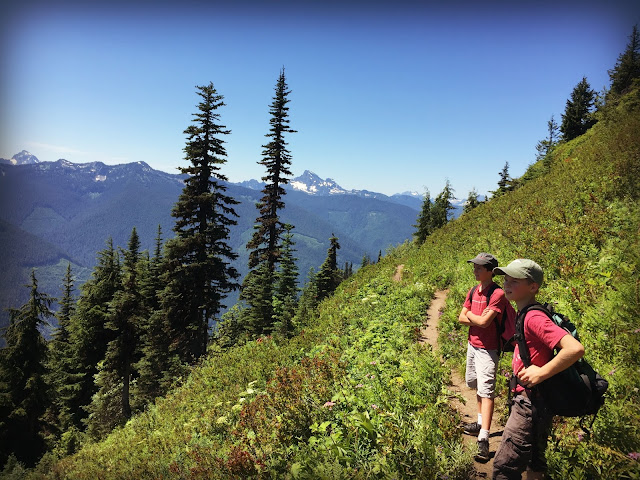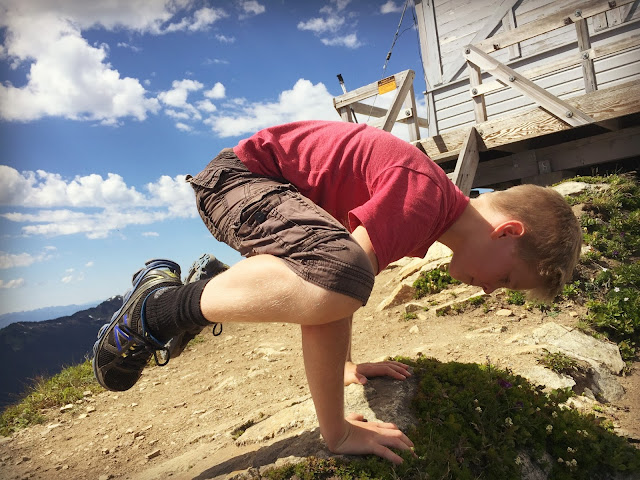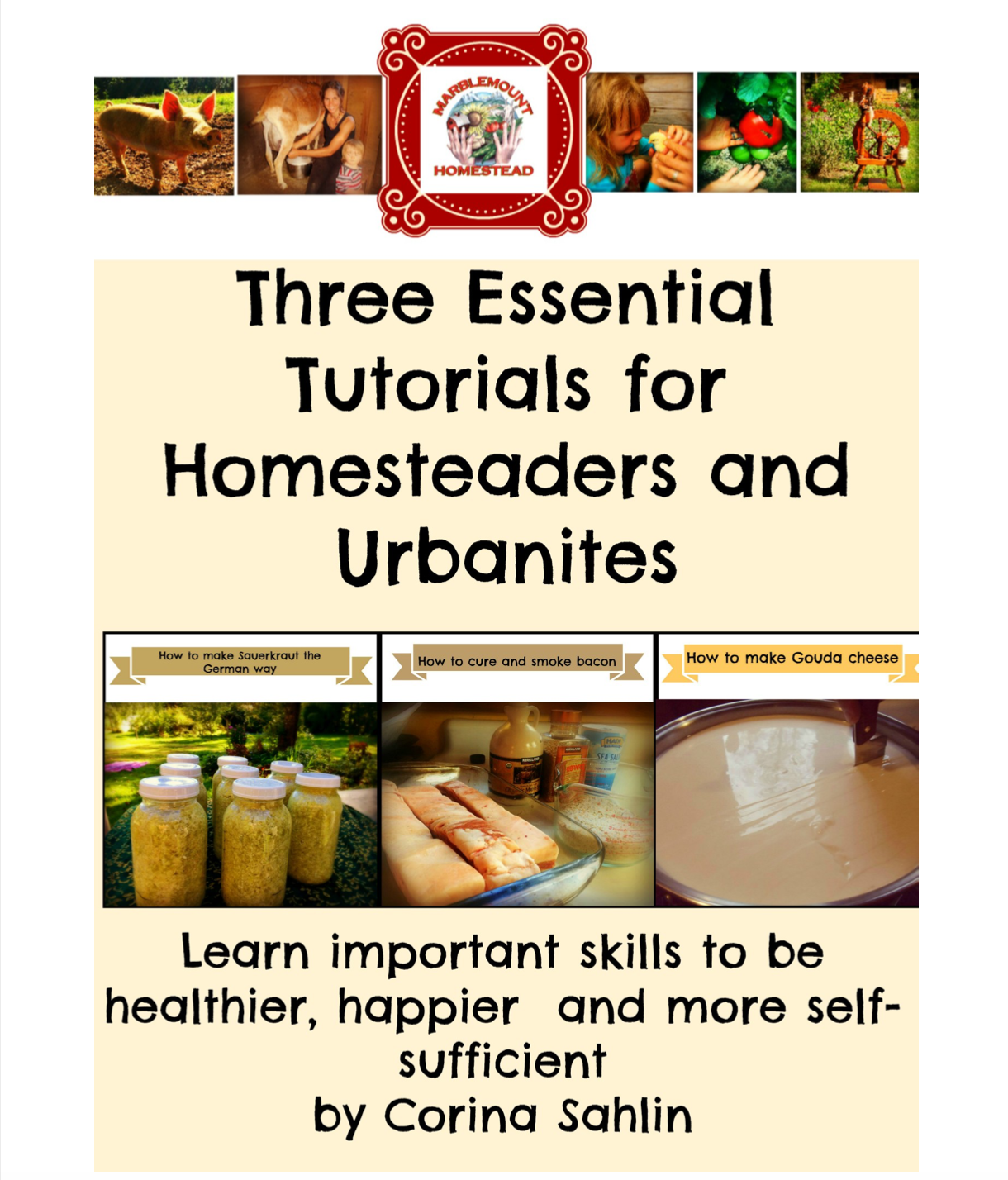Have you ever seen the bizarre-looking, Doctor-Suess-like curly tops that grow on the stalks of hardneck garlic in the spring? These are flower stalks the garlic plant sends upward to make babies (seeds), but if you are growing garlic for the fragrant bulbs in the ground, you should cut off these scapes so the bulbs can grow bigger instead of channeling their energy into reproducing.
Not that making babies is a waste of energy, but, you know... If you want big, fat garlic, you want to cut the scapes off.
We grow enough garlic for our family of five to use all year round, share with friends, and also dehydrate a lot for garlic powder. That's. A. Lot. Of. Garlic.
Many people like to use the scapes in stir fries to add some crunch and garlicky goodness. It's easy: Just cut the scapes in bite-size pieces and throw them in with other veggies while cooking them.
You can also make garlic scape pesto. Instead of basil, use garlic scapes, throw them in the blender with some olive oil, walnuts and sea salt, add parmesan and voila - you have an awesome meal!
Fermented Garlic Scapes
Our favorite way to consume garlic scapes is fermenting them, which yields a delicious, crunchy pickle-like treat - and it's good for you!
- Fermented foods preserve nutrients in food and break them down to a more digestible form, which helps you to absorb more of the nutrients in the food.
- Fermented foods are potent detoxifiers and contain much higher levels of probiotics than probiotic supplements, making them ideal for optimizing your gut flora, which helps to break down and eliminate heavy metals and other toxins from your body, strengthens your immune system, even lowers the risk for cancer.
How to make fermented garlic scapes
You can ferment the flower part, but make sure it's still tightly closed, otherwise it might spoil.
You need:
- Enough garlic scapes to fit into a quart mason jar
- 2 Tablespoons pickling salt
- 3 cups filtered water (chlorine or fluouride in the water will mess with the fermentation process)
- Mason jar with lid
- Something to weigh down the scapes (could be a ziplock bag filled with water, a smaller jar, or a canning jar air lock)
Head into the garden and cut garlic scapes. Enlist helpers, in this case two of my kids. Basically, you are cutting it off where it starts to curl. Or you can buy them at the farmer's market (the scapes, not the kids).
Gather enough scapes to fill one mason jar, or cut 'em all off and just double, or triple the recipe accordingly.
Rinse the scapes and cut off the woody, fibrous bottom part.
You can now either stuff them into the mason jar whole, in their curly gorgeousness, or trim them into small pieces. We cut them into 2-inch pieces with scissors, because we can fit more of them into one jar that way.
I'm a lucky woman, because I have a bunch of helpers. Below are my visiting in-laws who volunteered I coerced into helping me.
Dissolve salt in the (cold) water and pour this over the stalks in the mason jar. Use 2 Tablespoons of pickling salt per 3 cups of water.
Weight down the scapes and make sure they are completely submersed in the brine.
There are several ways to do this. I use a smaller jar filled with water as a weight. You can also use ziplock bags filled with water to weight things down. Heck, some people use washed and sterilized rocks.
Or if you want to be really safe and fancy, use a jar top air lock especially made for this purpose. They're worth the investment, because they make everything foolproof and super easy.
Put a lid on the mason jar and let the jar sit at room temperature. I like using plastic lids instead of the metal ones. Put the jar somewhere out of direct sunlight, otherwise it will heat up too much. You want to put it where it doesn't get too hot or too cold, because this can slow down or spoil fermentation.
After a day or two, bubbles will start forming, which shows you that the fermentation process has begun. This is exciting!
Day One:
Bubbles are already happening! Woot, woot!
Day 2:
More bubbles! It's working! Can you tell I'm excited?
Day 3:
Things are really bubbling now!
I briefly loosen the lid once a day to release any trapped gases in the jar and also remove any scum that forms on the surface. Check that the scapes are completely covered with brine.
When no more bubbles rise to the surface, fermentation is done.
Depending on the temperature of your house, fermentation can take from 3 to 7 days.
After fermentation is complete, you have to put the jar in the fridge. It will last a long time in there, but I recommend eating the fermented garlic scapes within a six month time frame.
Now for the most important step of all: Taste testing.
It's a good thing there are always a gaggle of children at our house - our own three kids and their friends. I asked three teenage boys to taste-test, and I asked two little girls to do the same. What better age groups than those to determine the quality of an obscure food like fermented garlic scapes?
All five kids agreed: they are good.
In fact, when I served dinner (pork chops from our own pasture raised meat, salad, kale, potatoes and garlic from our garden), they wanted the fermented garlic scapes, too. At the end of dinner, the jar was empty.


































































